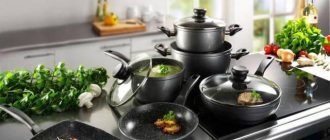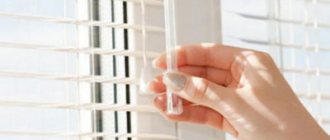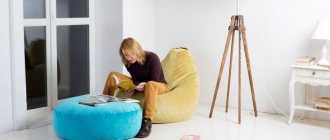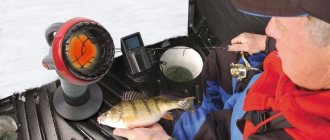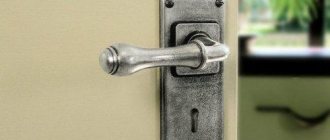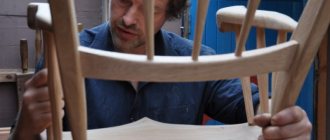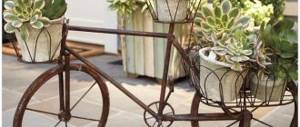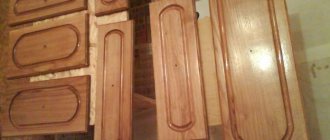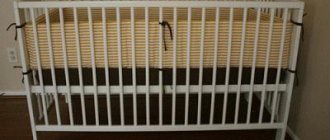Handles for kitchen furniture play not only a functional role, but also are the finishing touch of the interior. Some designers compare accessories to spices, which give a dish a unique taste. You need to be careful when choosing, since the front fittings can either emphasize the beauty of the furniture facade or create the opposite effect due to the inconsistency with the kitchen design style.
What materials are they made from?
Typically, front fittings are made from aluminum or zinc-based alloys, which make it possible to make durable and strong handles of the most incredible shapes. Each type of feedstock has its own advantages and disadvantages.
Types of materials for making handles:
- Steel. It is the most popular material due to its versatility. It is not subject to negative influences from temperature changes, moisture, and is also not afraid of rust and mold. Of the minuses, it is worth noting that repeated touches leave fingerprints on the fittings, and the surfaces themselves, especially matte ones, can only be cleaned using a special product.
- Copper. An excellent option for those who want to decorate their kitchen in an expensive, classic style. Also, this type of metal is easy to clean, unlike its steel counterpart. However, with all its advantages, copper handles will not look harmonious in all interiors, due to their high cost and luxurious finish.
- Ceramics. Highly durable products can retain their original appearance for a long time and are also easy to clean. Unfortunately, they are susceptible to mechanical damage.
- Tree. The models are highly environmentally friendly. At the same time, they have a short service life, quickly lose their original appearance, and are unstable to temperature changes.
- Plastic. Inexpensive option, but has a variety of designs. The products have a short service life, quickly lose their shape and are unstable to high temperatures.
- Glass. The products look very original and are easy to clean. But glass is a very fragile material, so it must be handled as carefully as possible.
If the priority is the strength and durability of the fittings, then you should choose steel products. And if you are primarily interested in design, then you can opt for glass or plastic handles.
Often the fittings are decorated with a coating that imitates: nickel, copper, gold, bronze, silver. The leading positions are occupied by products with a matte or glossy chrome finish, as well as imitation of aged metal.
Types of handles
Today's kitchen accessories market offers a wide range of front fittings to suit a wide range of styles and requirements. It is important not to make a mistake when choosing, because the durability and ease of use of the fittings depend on it.
Staples
The most common fitting option. They can be U-shaped, some models are presented in the form of a semicircle. The staples are very easy to use. They will suit any kitchen set, the main thing is to choose the appropriate design and material for production.
The reliability and strength of the handle-brackets is achieved through fastening with special screws. The products are fixed on the facades and ends of a large area, where they will look harmonious and perform their role most effectively.
One of the disadvantages is that the staples require more effort when opening the door, so when choosing a model, you should take into account that the size and weight of the handles should be directly proportional to the weight of the door leaf.
Built-in (mortise)
The peculiarity of built-in models is that they almost do not protrude beyond the furniture façade. Their advantages include increased functionality, as they help to quickly access the contents of cabinets or drawers.
Mortise handles are sold in a wide range and have a variety of designs: manufacturers offer models of any color, style and configuration. At the same time, finding built-in fittings at an affordable price is not difficult.
The disadvantage of the mortise type is the difficulty of installation: it is quite difficult to install the handle without a specialist and special equipment.
Buttons
These pens come in a variety of designs and shapes. Thanks to their unusual appearance, they can become the highlight of the interior, emphasizing the comfort and homely atmosphere of the environment.
The buttons can be easily installed yourself: the surface of the door is drilled through, a pin is inserted into the resulting hole, onto which parts of the handle are screwed on both sides. The opening mechanism with this model can be either push or turn.
Unfortunately, the buttons have a short service life due to their unreliable fastening mechanism.
Railing
They are a tube-shaped structure attached to a cabinet or drawer door using brackets installed at opposite ends. Outwardly, they resemble handles, but are more convenient to use.
Railing models can be made from a variety of materials. Finished products are coated with a special composition that prevents the appearance of contamination. Railings can be selected to suit every taste and color, with imitation of a wide variety of materials: gold, silver, platinum, special coating of their precious stones - this opportunity is provided by a special coating on the surface of the models.
When choosing roof rails for the kitchen, you need to take into account some of the features of this room. Thus, plastic and wooden models can quickly become deformed due to temperature changes and high humidity, and in the case of the wooden version, there may be a risk of fire. Therefore, the optimal solution would be to purchase a metal product, since it is a safe and versatile option.
Profile
Minimalist aluminum profiles are perfect for a modern-style kitchen. A profile handle is essentially a recess mounted at the top or bottom of the furniture façade. Cabinets or drawers equipped with such handles are very convenient to use.
The profile option can be located along the entire length of the facade, or also have a shorter length. Models are available in different thicknesses and shapes - round, angular or straight.
The disadvantage of integrated kitchen handles is that they have a short service life.
Touch screens with LED backlight
This is a special and very beautiful type of fittings. When touched, the pen begins to emit a soft light. This model is absolutely safe because the LEDs from which the backlight is made do not heat up. For those who are planning to equip their kitchen in a high-tech style, handles with LED lighting are a godsend.
The fittings are made of special plastic, which has a matte surface that softly diffuses light. Touch models operate on simple batteries. The power supply itself is hidden inside the facade using double-sided tape.
There are two types of luminous models: in the first case, the lighting is directed outwards, in the second - the light comes from the inside, beautifully illuminating the facades.
Other types of handles
In addition to the main types of furniture fittings, there are also unusual models. Such non-standard options are not used on the entire set, but, for example, to decorate individual pieces of furniture: a buffet or a china cabinet.
Some types of products with unique designs:
- Drops. They are a structure in the form of a small pin, onto which a decorative part is attached, shaped like a drop. This mechanism is not particularly convenient when opening a drawer or door, so it is installed on those pieces of furniture that are not often used.
- Rings. Known since the Middle Ages. Initially, these were heavy structures made of wrought iron. Now you can find models made from a variety of materials and representing a variety of configurations in any style. However, you should be careful when opening the doors, because if used carelessly, such fittings can damage the surface of the furniture.
- Sinks. This type of handle looks good in a classic style. The special configuration allows you to touch them from the inside when opening, without leaving marks or fingerprints on the outside.
There are also very unusual models, for example, in the form of cutlery, various animals, plants - the most important thing is to choose them in accordance with the style of the kitchen.
Kitchen fronts without handles Tip on
Recently, kitchen fronts without fittings have become increasingly popular. This mechanism is called Tip on. With this system, you can open a door or drawer with just one touch of your hand.
The Tip on mechanism for opening doors can be of different lengths, this parameter depends on the size of the facade. This model can be installed in a pre-drilled hole or using a straight or cross-shaped holder. The Tip on system has a discreet color scheme (black, gray or white) and a minimalist design, so it fits perfectly into a modern kitchen.
The Push to open system has a similar mechanism: when you press the facade, the device itself pulls out the drawer or slightly opens the cabinet door.
Handle profile
This type of fittings is based on an aluminum profile, which ensures strength and a special appearance. Manufacturers also very often use plastic, which undergoes additional processing to obtain strength, resistance to temperature changes and high humidity. An important point is the provision of a special appearance to emphasize the overall attractiveness of the fittings.
Related links: What color of upholstered furniture to choose for a living room in beige tones
How to choose the right one
Typically, handles are included with purchased furniture, but there may be a need to purchase separate custom-made fittings. Manufacturers make models for every taste and color. The main thing is not to make a mistake with the choice and buy the option that best suits the style of the kitchen and at the same time will have a fairly long service life.
The following recommendations will help you choose a high-quality and optimal option:
- Before purchasing in a store or after receiving a model ordered from a catalog, the handle should be carefully inspected for chips, cracks, and all decorative elements should be well secured.
- The width or length of the fittings must correspond to the parameters of the facade on which it will be attached.
- If the kitchen is small, then you should not select large and massive models, as they will visually overload the space.
- The fittings must match the chosen style of the kitchen: for classic or country style, artificially aged or antique models are suitable, and for a modern style - overhead brackets, rails, mortise or profile options.
Kitchen cabinets should not be placed close to the wall or against each other, because when opened, the handles will rest against the wall, and this can damage the wallpaper or other finishes.
Knobs-buttons
The popularity of the models is ensured by the ease of design, installation or replacement. The surface of the door is drilled and parts of the handle are screwed onto the pin inserted into the hole. They are characterized by a variety of designs: made from a variety of materials, with decorative inserts, enamel, and patterns. The shapes are round, oval, square, rectangular. Such traditional models can give the room a feeling of coziness, look good on vintage furniture, as well as furniture with small fronts and are combined with other types of handles.
Installation Rules
When assembling a kitchen unit yourself, installing the fittings yourself is inevitable. There are no particular difficulties with such an installation, but in order to carefully and without errors attach handles to the fronts of cabinets and drawers, you should take into account some nuances.
Before installation, it is necessary to try on the fittings for the future location to make sure that they do not interfere with the full opening of the doors and do not block adjacent cabinets or cupboards.
To install the fittings you will need the following tools:
- drill with a drill whose diameter is 4-5 mm;
- pencil and ruler;
- square;
- screwdriver;
- In the case of a glass facade, you will need a diamond-coated drill.
It is recommended to make a template from cardboard in advance, in which holes for fastening will be cut. This will make it more convenient to calculate the future installation location.
The installation procedure is as follows. We measure the width of the facade. From the obtained result we subtract the value of the interaxle distance and divide the remainder in half.
From the side edge of the facade we set aside the resulting value + the interaxial distance. We retreat 3–5 cm from the upper or lower edge of the surface.
At the marked points we drill holes with a diameter of 4–5 mm. It is recommended to carry out the work on the front side of the facade, since when the drill comes out from the back side, cracks or chips may appear on the surface.
We fix the fittings to the facade using a screw.
Installation on drawers is fundamentally different in that the fittings will be located in the center of the surface. We determine the middle of the facade - divide its length by two, and set aside 5 centimeters from the top edge. From the resulting point in opposite directions we retreat half the distance between the mounting holes.
